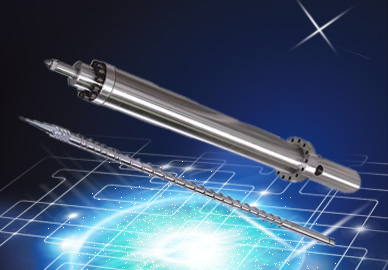
Strictly speaking, corrosion and wear are two completely different phenomena. The precondition for wear is the inevitable powerful effect and the existence of relative movement. Corrosion is only a chemical reaction. Even if the screw does not move, the molten material will cause corrosive damage to the screw surface. Various components that are decomposed when the plastic is heated, such as chlorides, bromine, sulfides, etc., corrode the surface of the metal, and the loose texture that it produces is easily hard-ground. Or, conversely, when some soft mass is eroded away, the protruding hard particles can easily wear the other surface, thereby accelerating the wear. Corrosive substances also prevent the formation of a polished, faded film, and this layer of fading film would have been beneficial for preventing adhesions. Obviously, the main cause of screw damage is the combined effect of corrosion and wear.
Corrosion depends on the chemical composition of the screw barrel and is independent of its hardness. Of course, both high hardness and corrosion resistance of materials (such as tungsten-based alloy screw is this material.) Is a good screw material, but often the cost of these materials also limits their use.
One way to prevent corrosion is to apply a layer of protective material on the surface of the screw barrel. For example, hard chrome plating on the screw is particularly effective in preventing the corrosion of chloride. The chromium oxide film produced at this time is more resistant to chloride corrosion. High resistance.